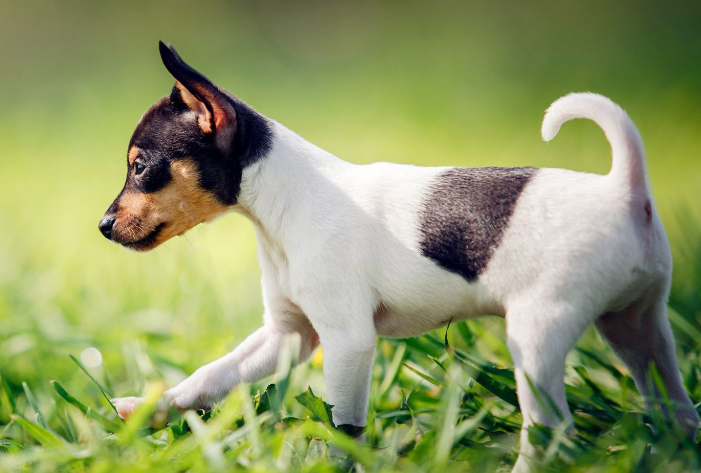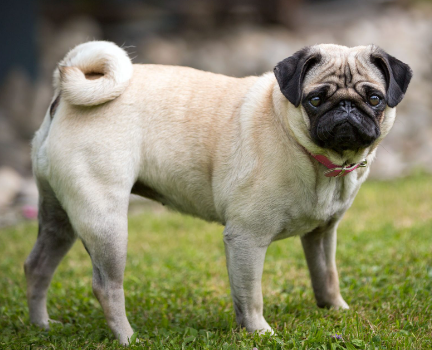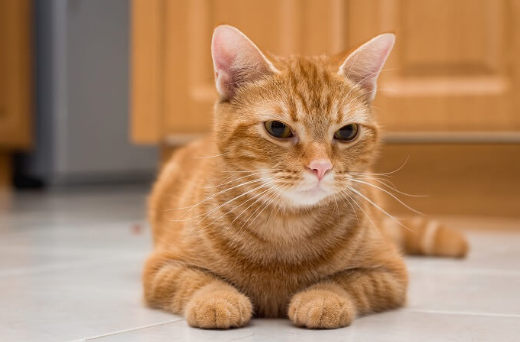The Bully Kutta possesses a formidable demeanor, and a reputation well-earned. A broad term encompassing mastiffs originating from Pakistan, these dogs are imposing, aggressive, and potentially hazardous.
They are favored by young men seeking to project a rugged image of masculinity, akin to the English Bulldog’s status in England and beyond. However, it’s important to note that the Bully Kutta is not a breed suited for novice owners or the faint-hearted.
Originating from Sindh, a region now divided between Pakistan and India, Bully Kuttas were selectively bred for tracking and guarding purposes. Their imposing size and assertive nature made them sought-after for dog fighting, a practice that unfortunately persists to this day.
Historically, even esteemed figures such as the great Mughal emperor Akbar III held Bully Kuttas in high regard for their tracking abilities. While predominantly found in Pakistan today, these dogs still inhabit the border regions of India.
- Origin: India/Pakistan
- Height: Male: 76 to 107 cm, Female: 76 to 91 cm
- Weight: Male: 70 to 90 kg, Female: 70 to 90 kg
- Lifespan: 8 to 10 years
- Colors: White, White, and Black, Fawn, Harlequin, White and brown, Black, Red, Brindle, etc.
Breed Characteristics
The Bully Kutta is a majestic breed, boasting impressive stature and striking aesthetics. These dogs are robustly built, with a muscular physique and a broad head that tapers elegantly to a fine tail. Their almond-shaped eyes command attention, often left natural but sometimes cropped.
Similar to Bulldogs, they possess loose skin, particularly around the neck and jawline. Their coat is short and typically white, although variations in color such as black, brown, brindle, and piebald are not uncommon.
In terms of size, Bully Kuttas are sizable creatures, with males standing between 30 to 34 inches at the withers, and females measuring between 29.5 to 31.5 inches. Fully grown males generally weigh between 70 to 89 kg, while females typically range from 60 to 70 kg.
| Good with Kids: 3Point | Child Friendly: 4Point |
| Cat Friendly: 1Point | Dog Friendly: 1Point |
| Trainability: 4Point | Shedding: 3Point |
| Watchdog: 5Point | Intelligence: 4Point |
| Grooming: 2Point | Popularity: 2Point |
| Adaptability: 2Point |

History
It is suggested that during the British invasion in the 1700s, British Mastiffs brought their colors to India.
The lineage of the Alangu Mastiff can be traced back to regions such as Rajasthan, the Bhawalpur area of Punjab, and the desert area of Kutch. Xerxes the First introduced a similar strain into Greece during his march in 486-465 B.C.
The true origins of the Bully Kutta remain somewhat unclear, sparking extensive debates regarding its country of origin, with claims ranging from India to Pakistan.
Historically, these dogs were primarily utilized for hunting large game such as bears and wild boars during the Mughal Empire. Some experts speculate that they were initially domesticated thousands of years ago.
Pakistani Bully Kutta
The Central Asian Mastiff has contributed to the lineage of the Bully Kutta found in northern Pakistan. Renowned for their prowess as guard dogs, they are also referred to as the Indian Alangu Mastiff, owing to their origins in southern India, particularly in the Tiruchi and Thanjavur regions.
During the British colonial era in India, the Bully Kutta underwent further refinement from the original Indian Mastiffs, predominantly for sporting purposes. Earned the moniker “Beast from the East,” these dogs garnered a reputation for their notably aggressive nature.
While the Bully Kutta is readily available in Pakistan, it remains relatively rare in India and elsewhere around the globe.
Bully Kutta Appearance
The Bully Kutta is a formidable breed, characterized by its large, robust build and muscular physique. These dogs can weigh up to 170 pounds, with some rare individuals reaching up to 200 pounds or 14 stone. Males can stand as tall as 44 inches, while females typically reach 36 inches, although their height can vary depending on exercise and conditioning.
Due to its diverse ancestry and characteristics, the Bully Kutta lacks standardization as a pure breed according to most experts. Instead, the term “Bully Kutta” is commonly used to describe a group of similar-looking Alaunt Hounds found in Pakistan and India.
Personality and Temperament of Bully Kutta
Being a highly intelligent and assertive breed, the Bully Kutta thrives under the guidance of a capable owner. With proper training, they display responsiveness and are quick learners.
Given their size, ample living space is essential for Bully Kuttas, and regular exercise is necessary to channel their energy effectively. However, they can also be prone to laziness and may sleep excessively when fatigued.
It’s crucial to understand that a tired dog can resort to destructive behavior, especially considering the potential damage a 150-plus pound canine can inflict. Prospective owners should be prepared to invest significant time and effort into caring for a Bully Kutta.
At home, these dogs exhibit positive traits, showing loyalty, devotion, and protectiveness towards their family. When properly socialized from an early age, they are affectionate and playful with other dogs, puppies, and children.
Naturally territorial and brave, Bully Kuttas remain vigilant and defensive of their territory, a trait stemming from their historical role as guardians. However, their breeding for fighting purposes means they can display pronounced aggression, particularly towards unfamiliar people or animals.
Caution is advised when introducing them to new individuals or creatures, as they may act aggressively without prior provocation. In some countries, such as the U.K., laws exist to regulate or ban certain bully breeds due to perceived risks. Bully Kuttas may be included in such legislation.
Observing a video of the Bully Kutta in action provides insight into their fierce and imposing nature.
Bully Kutta Health
A Bully Kutta typically has a lifespan ranging from 10 to 12 years. As they age, they may become susceptible to conditions like arthritis, possibly due to their large size and active lifestyles. Some individuals may also experience vision loss. However, overall, the Bully Kutta is considered a generally healthy breed.
Having originated from a life predominantly spent outdoors in rugged environments, Bully Kuttas are inherently resilient and accustomed to extreme conditions. This exposure has also conferred upon them a degree of resistance to parasites and infections.
There exists considerable diversity among Bully Kuttas, with various types having been isolated by geographical and temporal barriers over hundreds of miles and centuries on the Indian subcontinent. Consequently, differences in health may be observed among different lineages of the breed.
Health Issues
Hip dysplasia and arthritis are common in large and giant breed dogs. The Bully Kutta is no exception.
Other health conditions include:
Skin Problems
- Itching of the skin caused by allergies
- Manage
- Pyoderma and other bacterial skin infections
- Loss of pigmentation of the skin known as vitiligo
- Non-cancerous growths like sebaceous cysts
Eye Problems
- Blindness
- An inherited disease called Progressive Retinal Atrophy (PRA)
Heart Diseases
- Murmurs
- Valve problems
- Enlarged heart
Dental Health
Regular dental care is essential for maintaining the health of any canine breed. Providing high-quality food is crucial for promoting your dog’s overall well-being, but attention to dental hygiene is equally important. To ensure the health of your Bully Kutta, it’s recommended to clean their teeth using dog-specific toothpaste or a paste made from baking soda and water a few times per week. This routine dental care helps prevent dental issues and promotes a healthy life for your dog.

Care
Proper care is paramount for every canine, including the Bully Kutta. In this discussion, we will highlight some valuable points for caring for your Bully Kutta. Pay close attention to these tips and ensure a happy and healthy life for your beloved Kutta and puppies.
Best Food For
- Smoked Salmon with Lamb Grain Free Dry Dog Food with High Protein and Fat for Ultra Performance
- Roasted Chicken with Salmon Grain-Free Dry Dog Food with High Protein for Everyday Energy
- Lamb & Rice Healthy Grain Dry Dog Food for Good & Stable Growth of Puppies
Feeding Plan
- Pakistani Bully Kutta puppies between 8 to 12 weeks need four refections daily.
- Bully Kutta pups 3 to 6 months old should be fed three refections in a day.
- Feed pups six months to one- time-old two coliseums of food per day.
As canines age, their appetite may decrease. It’s advisable to offer high-quality dry dog food supplemented with canned food, water, or broth to maintain their nutrition. Aim for a balanced diet consisting of 40% meat, 30% vegetables, and 30% carbohydrates. Including organ meats like kidneys and liver provides essential nutrients for your dog.
Additionally, incorporate lean meats, eggs, fruits, and boiled vegetables into their diet to support their overall health. This approach ensures your Bully Kutta or Sindh Mastiff receives the necessary nutrients for a healthy life.
Feed Healthy Food
Provide high-quality dog food and snacks formulated specifically for Bully Kuttas and large breeds. A healthy diet consisting of nutritious and dry dog food is essential for proper canine healthcare. Opting for top-quality dry dog food ensures that your fully-grown Bully Kutta receives a well-balanced diet.
Grooming & Bruising
Grooming is essential for all dogs, including the Bully Kutta. This breed has short and smooth coats, requiring minimal grooming. As a moderate shedder, occasional brushing with a firm bristle brush is sufficient to keep the Bully Kutta looking tidy. Unlike breeds with longer coats, the Bully Kutta does not require extensive grooming.
Regular brushing helps maintain the excellent condition of the coat and reduces shedding. The double coat of the Bully Kutta often displays a subtle layering of colors. Consistent brushing not only minimizes shedding but also helps prevent matting and keeps your Bully Kutta clean and comfortable.
Training
PuppyDog Training
Training plays a crucial role in the life of every dog, including the Bully Kutta puppy. These puppies possess a regal demeanor and are highly receptive, displaying eagerness and intelligence. Nowadays, there are various methods available for training your dog, including obedience training, socialization, and more.
While it’s commonly believed that puppies are easier to train due to their blank slate, training a strong-willed breed like the Bully Kutta can require a delicate approach. Nonetheless, training is essential for all dogs. In the following section, we will explore different training methods to help you efficiently train your adorable Bully Kutta puppy.
Jalopy Training
Bully Kutta puppies require a calm and comfortable environment to rest and unwind, aiding in their relaxation and well-being. Additionally, crate training can be beneficial for managing a restless puppy, promoting their overall health and happiness.
Behavioral Training
The most basic form of behavioral training typically involves teaching commands and addressing common issues such as inappropriate chewing, housebreaking, or excessive barking. Behavioral training is essential for ensuring the well-being of your dog.
To effectively train your puppy, it’s crucial to address common behavioral issues such as barking and aggression. By incorporating behavioral training techniques, you can successfully tackle these issues and train your canine companion with efficiency.
Obedience Training
This training method covers fundamental commands such as sit, stay, come, down, and quiet. Providing proper training for your adorable puppy is crucial for their development and well-being.
Exercise demanded
Regular exercise is vital for ensuring the overall well-being and confidence of Bully Kuttas, contributing significantly to their health. Establishing a consistent exercise routine is essential for proper puppy care, offering numerous physical health benefits.
Engaging in regular exercise helps prevent various health issues in Bully Kuttas, including heart conditions, cancer, stroke, arthritis, and hip dysplasia. Implementing a daily exercise regimen is essential to keep them in good shape, stimulate their minds, and maintain their overall health.
Adoption Center
Other Dog Breeds and Further Research
FAQs
Bully Kutta Price
The price of Pakistani Bully in India may vary. generally, vaccinated Pakistani Bully Puppies are available between ₹ 6000 to ₹ 50000. The average bully Kutta price is$ 500 US.
Is Bully Kutta friendly?
It can be a dangerous canine in the wrong hands. But raised hypercritically within a family terrain and given a plenitude of openings to socialize with other people and creatures, sweats will produce a noble, pious canine. They’re kind and tolerant of children that they grow up with but aren’t so mellow with other faves.
Is Bully Kutta the strongest dog?
There is no mistrustfulness that the bully kutta is an extremely strong canine that can be used for protection. Like utmost other doggies, still, they’ll only be aggressive if trained to be, which just goes to show that bad geste is learned.
What’s the meaning of Bully Kutta?
heavily wrinkled canine
Bully Kutta literally translates to” heavily wrinkled canine”. The word” Bully” comes from the root word of the Hindustani and Punjabi languages” Bohli” which means heavily wrinkled.” Kutta” means canine in the Hindi-Urdu languages. The Sindhi mastiff resembles the mastiff and is notable for its hardiness and size.
Which is the wildest dog in India?
dhole
The dhole( Cuon alpinus;/ doʊl/) is a canid native to Central, South, East, and Southeast Asia. Other English names for the species include Asian wild canine, Asiatic wild canine, Indian wild canine, effervescing canine, red canine, and mountain wolf.












One thought on “Bully Kutta Dog Breed Best Information For You…”